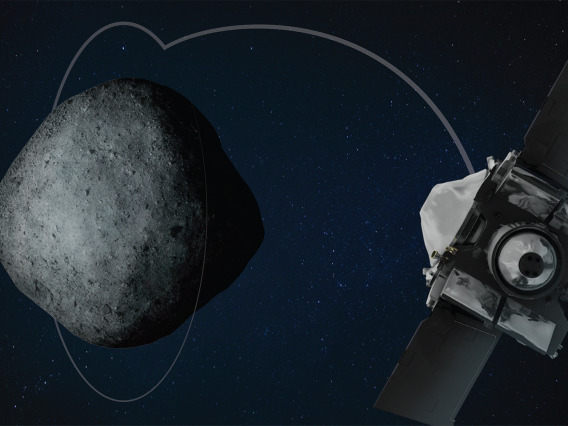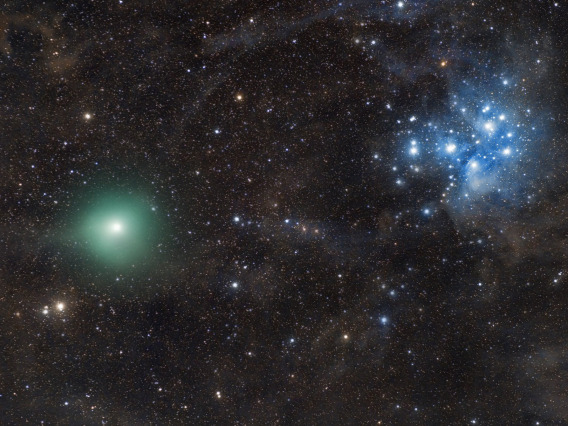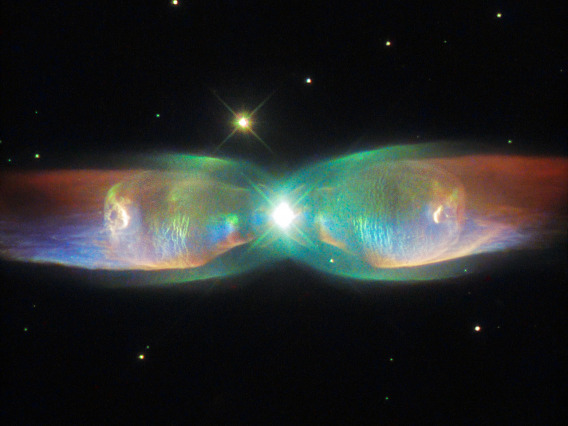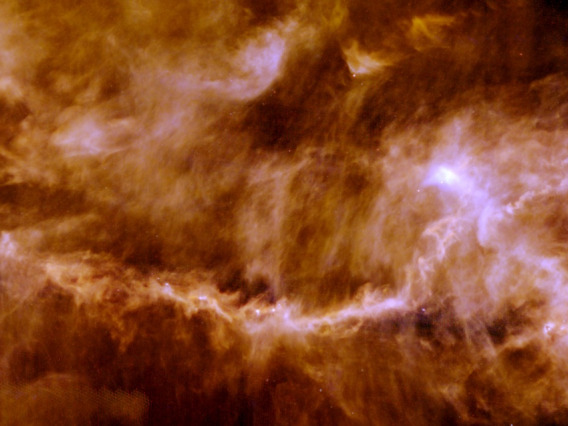LPL Newsletter: January 2019
Tuesday, January 1, 2019
This month’s LPL Newsletter highlights just how diverse the range of excellence is at LPL. The big story, of course, is that OSIRIS-REx arrived safely at asteroid Bennu. Because we normally highlight just two stories each month, the question was what the second story would be. But soon enough, the press releases about great science involving LPL researchers just kept coming, so we feature four stories this month. One of the things I like about this set of news is that the techniques range from spacecraft to laboratory analysis to telescopes (this month, they’re dominated by radio telescopes), and the topics range from grains in meteorites to near-Earth asteroids to comets to planets around other stars.
The OSIRIS-REx spacecraft (mission led by LPL Professor Dante Lauretta) arrived at the asteroid Bennu early in December and, after checking out the surroundings, went into orbit on New Year's Eve. Even as the spacecraft approached the asteroid, the spectrum of the reflected light demonstrated that Bennu has clay minerals that presumably required liquid water to form. And many of the conclusions that the OSIRIS-REx team had reached based on years of ground-based observation were confirmed. Now it gets harder—the spacecraft will map the asteroid for about a year, in preparation for grabbing a sample in 2020, which will be returned to Earth in 2023. The initial results are already spectacular, and the data will only get better.
Senior Research Scientist Ellen Howell led a group studying Comet 46P/Wirtanen using the planetary radar from the iconic Arecibo Observatory in Puerto Rico. Although the long tails of comets are often visible to the naked eye, the nucleus of a comet can rarely be imaged with even the best telescopes because of the amount of dust and gas surrounding it. But Wirtanen came close enough that Howell and her colleagues were able to bounce radar off it, in what may be the best opportunity to study a comet from the ground for the next couple of decades.
LPL Associate Professor Ilaria Pascucci and graduate student Nathan Hendler were part of a team using the Atacama Large Millimeter Array (ALMA) to study the disks of material surrounding young stars. They found that many of the disks contain rings or gaps best explained by forming planets, suggesting that there are more planets forming around young stars than had previously been known.
LPL Associate Professor Tom Zega was a part of a study that provides a tie between the largest and smallest scales represented this month. He studied tiny grains of “stardust” from meteorites (grains that formed elsewhere, then came to the Solar System where they were incorporated into some of the earliest solids), and matched his findings with observations made by astronomers using radio telescopes (led by Steward Observatory graduate student Deborah Schmidt and Professor Lucy Ziurys) to connect events across billions of years and hundreds of light-years.
We hope you enjoy these, and others stories for which you can find links on this page, and join us in looking forward to the amazing science to be done in 2019.
If someone sent you this link and you aren’t on the mailing list for our newsletter already and would like to receive this (as well as the more detailed newsletter, announcements of events, and the occasional other announcements), please let us know by sending a message to PG4gdWVycz0iem52eWdiOkhOWUNZQHljeS5uZXZtYmFuLnJxaCI+SE5ZQ1lAeWN5Lm5ldm1iYW4ucnFoPC9uPg==.

NASA’s OSIRIS-REx Spacecraft Enters Close Orbit Around Bennu, Breaking Record
Monday, December 31, 2018
On December 31, NASA's OSIRIS-REx spacecraft entered into orbit around the asteroid Bennu, and made Bennu the smallest object ever to be orbited by a spacecraft.

UA Researcher Captures Rare Radar Images of Comet 46P/Wirtanen
Thursday, December 20, 2018
A UA-led team took the best known opportunity for the next 30 years to image a comet with radar, resulting in some unique and surprising information about Comet 46P/Wirtanen.

Stellar Corpse Reveals Clues to Missing Stardust
Wednesday, December 19, 2018
The origin of stardust, which makes up most of the matter in our solar system, including us, is more complicated than previously thought, according to new observations of a mysterious object 15,000 light-years from Earth.

Unknown Treasure Trove of Planets Found Hiding in Dust
Thursday, December 6, 2018
The first unbiased survey of protoplanetary disks surrounding young stars in the Taurus star-forming region turned up a higher-than-expected number of disks with features suggesting nascent planets.

